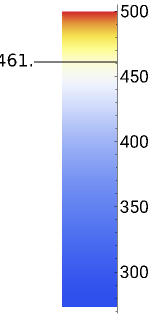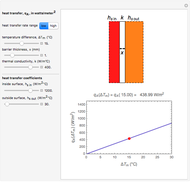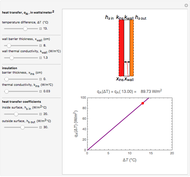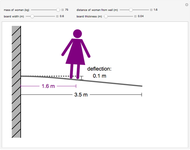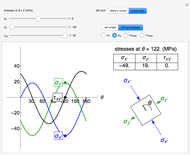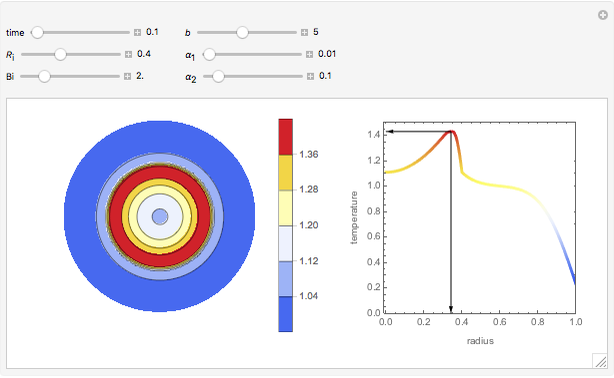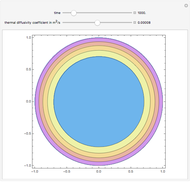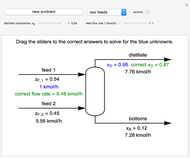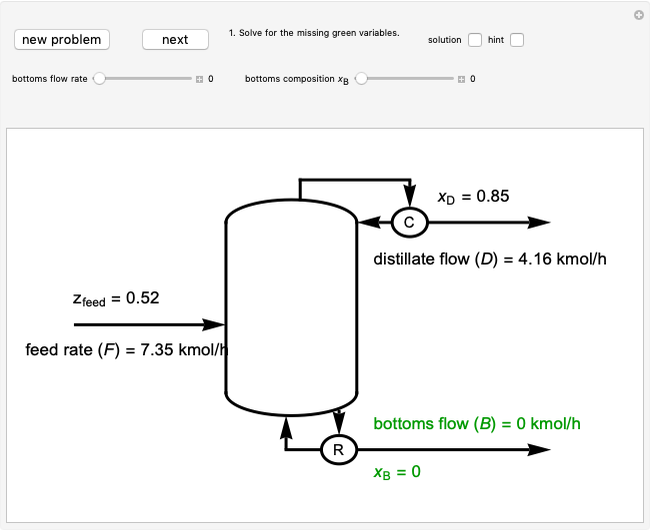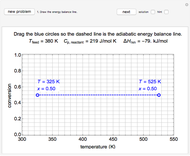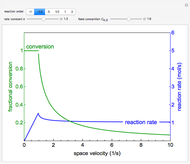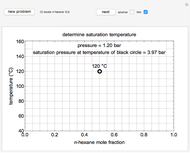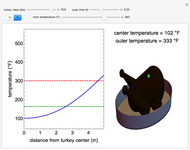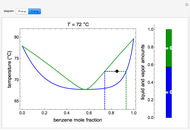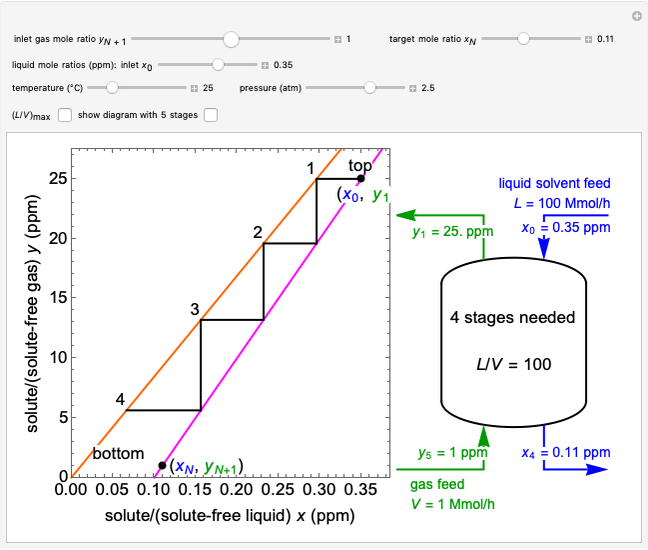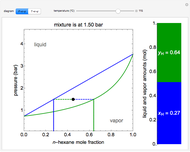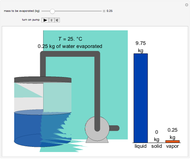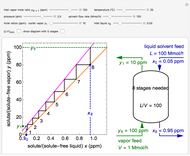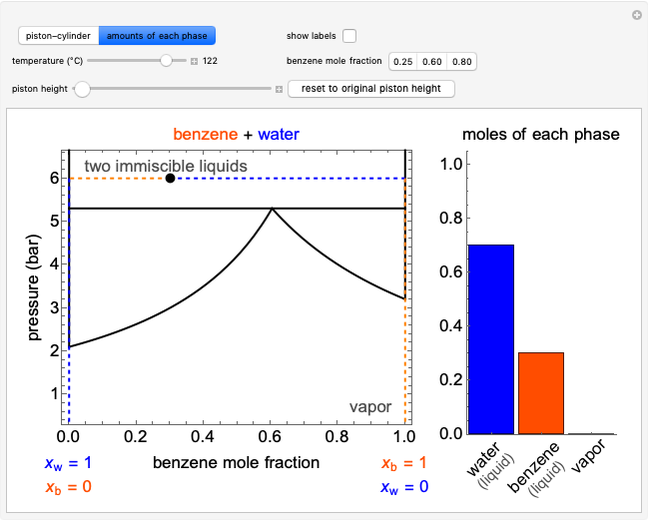Heat Transfer in Fins

Requires a Wolfram Notebook System
Interact on desktop, mobile and cloud with the free Wolfram Player or other Wolfram Language products.
This Demonstration calculates the heat transfer rate through a single fin (either a rectangular or a pin fin) mounted on a heat sink at 500 K. Air flows laminarly across the fin in the direction indicted by the arrows in the figure (rotate the fin with a mouse to help visualize the flow pattern). The fin tip is adiabatic. Use sliders to vary the fin length and the air temperature. Select the fin material from the drop-down menu. The temperature distribution is shown on the fin surface using a color scale (red is hottest, blue is coolest), and the temperature of the fin tip is shown on the scale. Both the rectangular fin thickness and the pin fin diameter are 1.5 mm. The heat transfer rate through the fin is displayed above the fin, as is the fin effectiveness, which is the ratio of the fin heat transfer rate to the heat transfer rate without the fin.
Contributed by: Rachael L. Baumann (September 2016)
Additional contributions by: John L. Falconer
(University of Colorado Boulder, Department of Chemical and Biological Engineering)
Open content licensed under CC BY-NC-SA
Snapshots
Details
The heat transfer coefficient of air  is calculated using Nusselt correlations for laminar flow over a flat plate and a cylinder. Air properties are evaluated at 300 K. The average Nusselt and Reynold's numbers are:
is calculated using Nusselt correlations for laminar flow over a flat plate and a cylinder. Air properties are evaluated at 300 K. The average Nusselt and Reynold's numbers are:
 ,
,  for a rectangular fin of width
for a rectangular fin of width  (m),
(m),
 ,
,  for a pin fin of thickness/diameter
for a pin fin of thickness/diameter  (m),
(m),
and  is the thermal conductivity of air (W/[m K]),
is the thermal conductivity of air (W/[m K]),  is the velocity of air (m/s),
is the velocity of air (m/s),  is the kinematic viscosity of air (
is the kinematic viscosity of air ( ) and
) and  is in units of
is in units of  .
.
For a rectangular fin:
 ,
,
for a pin fin:
 ,
,
and  is the unitless Prandtl number:
is the unitless Prandtl number:
 ,
,
where  is the heat capacity of air (J/[kg K]), and
is the heat capacity of air (J/[kg K]), and  is the dynamic viscosity of air (
is the dynamic viscosity of air ( ).
).
For a fin with a tip that is assumed to be adiabatic:
 ,
,
 ,
,
where  is temperature (K),
is temperature (K),  is the ambient air temperature,
is the ambient air temperature,  is the base temperature,
is the base temperature,  is a simplification term,
is a simplification term,  is the fin length (m),
is the fin length (m),  is distance down the fin,
is distance down the fin,  is the fin heat transfer rate (W),
is the fin heat transfer rate (W),  is the fin perimeter (m),
is the fin perimeter (m),  is the fin cross-section area (
is the fin cross-section area ( ) and
) and  is the thermal conductivity of the material (W/[m K]), and
is the thermal conductivity of the material (W/[m K]), and  .
.
For a rectangular fin:
 ,
,
 .
.
For a pin fin:
 ,
,
 .
.
The fin effectiveness  is the ratio of the fin heat transfer rate to the heat transfer rate that would exist without the fin:
is the ratio of the fin heat transfer rate to the heat transfer rate that would exist without the fin:
 .
.
The thermal conductivities (W/[m K]) of the fin materials are:
stainless steel 
carbon steel 
iron 
brass 
aluminum 
copper 
Reference
[1] T. L. Bergman, A. S. Lavine, F. P. Incropera and D. P. DeWitt, Introduction to Heat Transfer, 6th ed., Hoboken, NJ: John Wiley & Sons, 2011.
Permanent Citation
